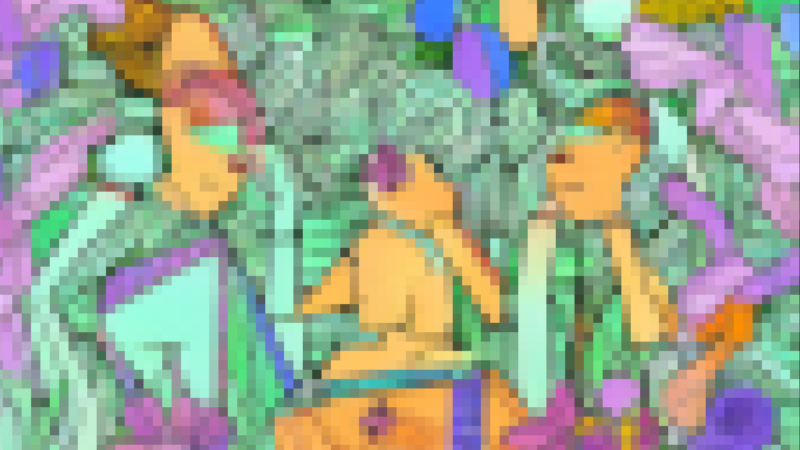March 15, 2022
The “right turn on red” is one of the few remaining labors of judgment in the modern American intersection. There is an opening left in the coding of the traffic lights which trusts to the individual the ability to choose whether it is safe to turn based on a number of factors. To turn right on red, you cross no lanes of traffic and enter one that you have judged to be free of oncoming traffic, bicyclists, or pedestrians. We install “no turn on red” signs where the average individual lacks ready access to the information required to safely turn on red as a result of the intersection’s design (blind spots, oncoming traffic, complex multi-lane signal patterns).
Enter the digital “no turn on red” sign. In lieu of a permanent “no turn on red,” this digital sign illuminates during certain periods in the traffic signal pattern, and turns off during others. Turning the sign on and off designates a further shortening of the circuit of variables which the infrastructure believes the driver has the capacity to safely judge. When it’s off, presumably, you can turn right on red as you normally would. Oddly enough, however, that doesn’t make it any simpler to turn right on red, since you still need to judge whether it’s safe.
Who determines how much complexity the individual’s judgment is capable of? No one. The system tends toward the least complex judgments possible for each subject. From the Starbucks drink line to the proliferation of self checkouts to the standardization of digital date cruising this is happening everywhere to accelerate the American model of libertarian consumer subject: all interactions subsist in a circuitous network of atomized nodes approaching the limiting of frictionless, accelerating exchange, and circuits are optimized as such.
What I mean by “circuit” is the multiplicity of phenomena related to and effected that are evaluated in the process of making a decision or rendering a judgment. We “shorten” circuits by introducing technologies (which enact what Hayles calls “non-conscious cognition”) which distill many phenomena into one in order to expedite the task of conscious or subconscious judgments. For instance, I only need to address “is the traffic light green?” I do not need to address whether there is a vehicle coming, pedestrians, or bicycles, or if it is my turn to go. We outsource responsibility for these phenomena to the traffic light, I take responsibility only for the traffic light, I have “shortened” the circuit.
We “short” circuits when the composition of our relationship with the infrastructure (what Hayles calls “cognitive assemblages”) is such that the technology ceases to refer to this multiplicity, becoming an untethered phenomena itself no longer serving its purpose but even capable of causing the very tragedy it was originally intended to prevent. Someone drives directly into a disabled vehicle in an intersection because their light was green. Someone has a dry cough, slight fever and no smell but takes one, maybe two COVID tests, and determines its allergies or a cold so visits their grandmother with COPD and kills her. In both cases the tragedy was created precisely by the technology which was invented to avoid it because of the composition of the individual’s relationship to it.
These ever-tightening circuits are understood as proof that the system is functioning rather than failing. Like the epicycles of a pre-Copernican astronomer, these “circuits” are not shortening around immutable physical principles. We would like to think that the laws of frictionless, accelerating market exchange were derived from the elegant motion of the planetary bodies themselves, but they are illusory schemes like astrology in a Ptolemaic universe. The more we refer back to this paradigm of exchange to explain anomalous phenomena, the more epicycles we inscribe in a quickly fracturing system of political economy. Now, our inherited political economy, like a poltergeist, has gained substantial enough mass to serve as a metaphysical substrate for illuminating the motion of all human bodies’ exchange and interaction.
It feels commonplace nowadays for aliens like myself to be chided in contemporary Democratic left discourse for offering critiques of social justice or economic parity programs even if all parties agree on vaguely defined social ends. What do we do with statistical analyses that seem to undermine clear and obvious ethical ends? If we begin with clear and obvious ethical ends, it doesn’t much matter whether the statistics are in your favor or not.
Which brings me to my central critique of the Democratic left (without a thought for particular tactics.)
In lieu of the feasibility of new, simple political or social systems which open or set trajectories toward justice, the left persists by creating more and more complex epicycles to jerry rig an equitable system around one failing to accomplish the same declared ends. It attempts this primarily through the accumulation of virtual political will. Whereas “truth” used to be theorized as coherence within a conceptual system or correspondence to a stable metaphysics, ideas and facts now gain value primarily by accumulation within and across networks of exchange.
This is why wokeism resembles civil religion, but if it is anything like this, it is civil religion upside down. It purports to reference a stable political reality (that is equitable, charitable, etc.) but not because it believes it, but because if it continues to reference it, it can continue to act as it has (and it may come to be). It is a mafioso who attends mass to entreat god to help him kill his enemy, or a sport’s fan who prays for his team to win. In both instances, if the purported divine referent actually existed (even if it sincerely existed in the subject’s mind), the emblematic activity which presumes the divine discourse need never have been enacted.
The causal joint between appearance and reality has not simply closed, it has inverted and continues to bifurcate. The Democratic left’s epistemological opportunism willingly obscures or obfuscates observations which inhibit the cause of justice and peace. But admirable and upright ends are too easily defanged, like some mutated Machiavellian moralism.
It has severed itself from reality because the task of virtual liberation seems more feasible than a real one. Real democratic liberation is at best illusive, but probably impossible. In place of the infinitely receding horizon of peace and justice, the left has installed a program of marginally discrete longitudes of political success. Often they are even obviously latitudinal. As a result of the loss of a stable historical, metaphysical referent for the progress of society and history, the Democratic left has installed a political platform that progresses so little it finds safety in the stability of its self as a referent. It does effectively nothing except constantly save face and set its own standards for success so that it can not but do so.
The left believes it’s beautiful because it wears makeup, and healthy because of how tight it strings its corset. But it mistakes its makeup for its face and continues beneath the crusty greasepaint to fester its own boils and cysts. By the stringing of its corset it no longer bleeds since it no longer produces even unfertilized eggs.
It is justification by double negative: “I am woke because I can’t not be,” and the material inertia of the entire society continuing as such, held hostage to itself, creates both the terms of its peril and the terms of its own liberation.
Like the digital no turn on red sign, wokeness installs shorter and shorter epicyclic circuits to guide subject interaction in lieu of the development of more complex judgment. And consequently those “ethical” technologies function in the same vein as traffic infrastructure, legitimized through acceptance by the aggregate. If all people abide by, for instance, more inclusive speech patterns, the end result will be a more inclusive society. And it will, to be clear. The left acts this way because society has been constructed to sanction these liberatory dynamics. What is lost, however, is that the left then fails to question the modes of liberation which are conceivable under the conditions of the system used to produce these effects.
Consider a child who is now really sick having proceeded originally from symptom manifestation: ultimately, the left has defanged the sick populous it claims to represent as an unintentional result of symptomatizing so feverishly that the real infection at play in the sickness symptom cycle no longer serves as real stable political referent by which a base could be effectively mobilized toward the healing of real, extant infections in the society.
All of these ethical technologies championed by Democratic left’s are ultimately conditioned by the premise that non-interference between libertarian actors buttresses parity. But as much as one desires to tax the rich in order to redistribute capital and make the economy more inclusive, it is inevitably relying on the same market forces which caused the current inequity to fix it. In our American nihilism, capital is both oppressor and liberator.
To feel more at home, a drifting spacewalker might just strap a corrugated panel of satellite trash to his feet. Alongside the astronautic psychopath, the Democratic left drifts both further from Earth and nears suffocation at the same time. The spiraling persists, deepening into Kierkegaardian despair and identity crisis because it has no idea to what stable politically (or metaphysically) it refers, but desperately wants to persist, running on the residual fumes of modernist social historical telos.
Where the right leans into epistemological nihilism, the left leans into epistemological opportunism. Both share equally in these political levers. They are two masks in the same melodrama of interests battling for control using the same means of power and expression inherited from consumer and market ontologies. They are two sides of the same coin of ethical impulses inherited from and actively simulating politics of the past to garner favor with the rest of the momentarily misbegotten children of history.
Both are Ouroboric, ever tightening spirals of regressive infantilism and non-responsibility. These discordant epistemologies are the result of cluster B personality disorders embedded systematically in our techno-social infrastructure (what Hayles calls the “cognitive non-conscious assemblages”) and presenting in human thought itself. It is an exhibition of the depravity of our post-human infrastructure misled by the acceleration of impoverished value systems. If humanity’s value system continues ad absurdum, ad infinitum, the only competition will be for who can accrue the most hits off the IV morphine drip before it empties—even if it’s in a Martian hospice care facility.
Our future, save course correction, is this system recreating itself ad infinitum. Power is circuitously gathered from the system to combat problems which are created by the system itself. Inevitably, the use of the system to gain power tacitly permits—and undergirds the capacity for—that system to persist creating and recreating the same problems.
Ironically, the digital no turn on red sign is the source of its own unbecoming. The technology performs the judgment in such a way that it requires the user not only to outsource judgment to an elementary binary (like the permanent no turn on red), but suspend the judgment that assumes a certain amount of temporal coherence. The ideal subject for the digital turn on red sign is not just a binary signal processor, but an amnesiac binary signal processor. Short of amnesia, the subject who approaches the technology over a period of time begins to see the patterns for which the infrastructure is trying to account: e.g. the sign illuminates when the opposing traffic gets a green arrow or a pedestrian activates the crosswalk. Suddenly, the horizon of the given techno-social infrastructure approaches.
The subject realizes that regardless of the sign’s illumination, it has a better capacity to judge. Maybe that judgment means that the best judgment is to listen to it. This is still a higher judgment than the one who arrives at the same place without a question. In that motion, the modern world and its antique epicyclic non-conscious infrastructure begins to come into finer focus. The post-modern human finds that they can trust the latent resources of their subjectivity to provide more stability to the technologies which have given birth to the makeup of its critical faculties and to which they have been conventionally outsourced.
This is the post-modern allegory of the cave. You wake up and find you cannot trace your wires back to a source—this is only another simulation of Plato, Descartes, Kant. Instead, you discover that when you trace them back to each other. The horizon of each circuit recedes infinitely, for better or worse.
The red light means nothing except that everyone stops at it, and so do I stop at it. Signs, symbols, words signify nothing except by aggregate. The power of media and the internet is its capacity to materialize and consolidate the aggregate. Its weakness is that it only has the power to aggregate around forms derivative of the media and internet. Therein lies its danger.
Everyday we learn new things. Most of us learn how today looks in the same clothes we wore yesterday.




